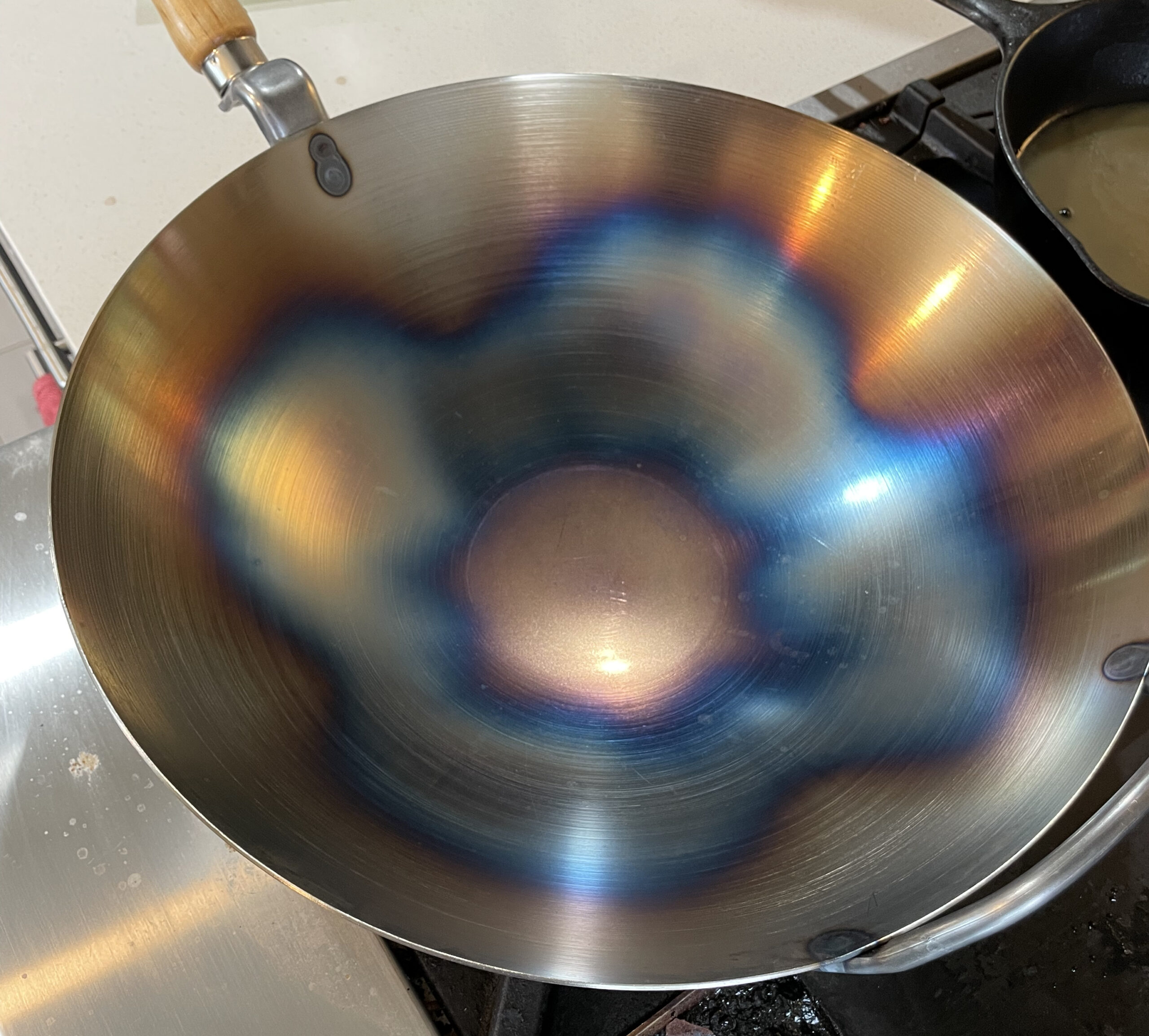A wok is a versatile and popular cooking utensil, particularly in Asian cuisine. It is commonly used for stir-frying, sautéing, deep-frying, boiling, and steaming. Seasoning your wok is an essential step in ensuring it remains non-stick, prevents rusting, and helps improve the flavor of your dishes. This essay will delve into the importance of seasoning your wok, the process of seasoning, and some tips for maintaining a seasoned wok.
Importance of Seasoning Your Wok
Seasoning a wok is the process of adding oil to the surface of the wok and heating it to create a non-stick layer. This layer helps prevent food from sticking to the surface of the wok, making it easier to cook and clean. A well-seasoned wok also conducts heat better, which ensures that food is cooked evenly and quickly.
Moreover, seasoning helps prevent rusting. Woks are often made of carbon steel, which is susceptible to rust when exposed to moisture. When a wok is seasoned, it creates a protective layer that prevents moisture from coming into contact with the metal. This layer also helps preserve the wok’s natural non-stick properties, making it last longer and saving you money in the long run.
Seasoning your wok also improves the flavor of your dishes. When you cook in an unseasoned wok, the food may stick to the surface, which causes it to burn and leaves a bitter taste. In contrast, a seasoned wok allows for a smoother cooking process, which enhances the flavors of your ingredients.
Process of Seasoning Your Wok
Before you start seasoning your wok, ensure that it is clean and free of any debris or rust. Here is a step-by-step guide to seasoning your wok:
Step 1: Wash the wok with hot soapy water and scrub it with a sponge or brush. Rinse it with water and dry it thoroughly.
Step 2: Preheat your oven to 450°F.
Step 3: Rub a thin layer of oil on the entire surface of the wok, including the inside and outside. Use an oil with a high smoke point such as vegetable oil, canola oil, or grapeseed oil.
Step 4: Place the wok upside down on the middle rack of the oven. Make sure to place a sheet of aluminum foil at the bottom of the oven to catch any oil drips.
Step 5: Bake the wok for 20 minutes.
Step 6: Turn off the oven and let the wok cool down in the oven.
Step 7: Repeat the process 2-3 times until you notice a shiny, dark layer of seasoning.
Tips for Maintaining a Seasoned Wok
After seasoning your wok, you should take some measures to maintain its non-stick properties and prevent rusting. Here are some tips for maintaining a seasoned wok:
- Avoid using soap when cleaning your wok. Instead, use hot water and a sponge to scrub it clean. Soap can strip away the protective layer of seasoning, which will require you to season it again.
- Avoid using abrasive materials such as steel wool or metal scrubbers when cleaning your wok. These materials can scratch the surface of the wok and damage the seasoning.
- Dry your wok thoroughly after washing it to prevent rusting. You can use a towel or put it on the stove over low heat for a few minutes to evaporate any moisture.
- Use a wok spatula or wooden spoon when cooking in your wok. Metal utensils can scratch the surface of the wok and damage the seasoning.
- Store your wok in a dry and cool place. Avoid storing it in a





